Asia dominates global waterfowl production
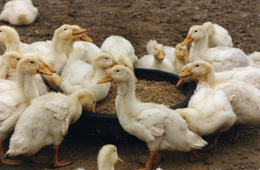
On a global scale, consumption of waterfowl products is playing a minor role. Yet, production has grown considerably in recent decades. Asia is clearly taking the lead, with China undoubtedly in a dominating position.
By Dr Hans-Wilhelm Windhorst, University of Vechta, Germany
Even though numerous analyses on patterns and dynamics of hen egg and chicken meat production and trade are available, almost no studies on the development and recent patterns of waterfowl production and trade have been published. This may be due to the fact that the contribution of duck and goose meat to global poultry meat production was quite low with together 6.8 % in 2009. To fill this gap, a detailed analysis of the development of waterfowl production and trade between 1990 and 2009 was elaborated to identify spatial shifts, the formation of production centres and to document trade flows.
Waterfowl meat production 1990-2009
Between 1990 and 2009, duck and goose meat production increased from 1.9 to 6.3 million tonnes or by 239%. The data in Table 1 show that the production volume of goose meat increased faster than that of duck meat. Whereas in 1990 duck meat production was almost twice as high as that of goose meat, the difference was only 54% in 2009. Nevertheless the difference in production volumes grew from 600,000 tonnes (1990) to 1.4 million tonnes (2009). The growth rates between 1990 and 2000 were much higher than in the following decade. Quite obviously, the per capita consumption of these two poultry meat types did no longer grow as fast as in the first decade of the analysed time period. Figure 1 shows that the Avian Influenza outbreaks in the first half of the past decade caused a plateau in the continuous upward trend.
Between 1990 and 2009, duck and goose meat production increased from 1.9 to 6.3 million tonnes or by 239%. The data in Table 1 show that the production volume of goose meat increased faster than that of duck meat. Whereas in 1990 duck meat production was almost twice as high as that of goose meat, the difference was only 54% in 2009. Nevertheless the difference in production volumes grew from 600,000 tonnes (1990) to 1.4 million tonnes (2009). The growth rates between 1990 and 2000 were much higher than in the following decade. Quite obviously, the per capita consumption of these two poultry meat types did no longer grow as fast as in the first decade of the analysed time period. Figure 1 shows that the Avian Influenza outbreaks in the first half of the past decade caused a plateau in the continuous upward trend.
Increase almost everywhere
A closer look at the dynamics on the basis of single continents reveals that duck meat production increased in all continents with the exception of Central and South America (Table 2). Asia dominated production of this meat type with a share of 83.7% in 2009, followed by Europe with 11.8%. All other continents were of minor importance. Between 1990 and 2009 the contribution of Asian countries to global production increased by 12.9% whereas that of European countries declined by 6.3%.
A closer look at the dynamics on the basis of single continents reveals that duck meat production increased in all continents with the exception of Central and South America (Table 2). Asia dominated production of this meat type with a share of 83.7% in 2009, followed by Europe with 11.8%. All other continents were of minor importance. Between 1990 and 2009 the contribution of Asian countries to global production increased by 12.9% whereas that of European countries declined by 6.3%.
In goose meat production (Table 3), the dominance of Asia was even higher. In 2009, this continent contributed 94.6% to the global production volume, 16.2% more than in 1990. Europe lost almost 80% of its former share. In Africa production increased by 18,000 tonnes, but the contribution of this continent to global goose meat production fell from 3.0% (1990) to 1.5% (2009).
A comparison of the dynamics shows that Asia could further strengthen its dominating position and that Europe, in spite of a considerable increase in duck meat production, was the main loser over the past two decades. Goose meat data always includes guinea fowl meat as the FAO does not show data for goose meat separate from guinea fowl meat.
China in dominating role
A closer look at the dynamics per country shows that the regional concentration in duck meat production further increased in the analysed time period and that China was in a dominating position in 2009 with a share of over 69% of the global production volume (Table 4). France still ranked second place, followed by Malaysia and Myanmar. Malaysia’s production volume was three times higher in 2009 than in 1990. Myanmar was not to be found among the ten leading countries in 1990 and 2000, but in 2009 it ranked as number four. Six of the top ten duck meat producing countries were located in Asia, three in Europe and one in North America.
A closer look at the dynamics per country shows that the regional concentration in duck meat production further increased in the analysed time period and that China was in a dominating position in 2009 with a share of over 69% of the global production volume (Table 4). France still ranked second place, followed by Malaysia and Myanmar. Malaysia’s production volume was three times higher in 2009 than in 1990. Myanmar was not to be found among the ten leading countries in 1990 and 2000, but in 2009 it ranked as number four. Six of the top ten duck meat producing countries were located in Asia, three in Europe and one in North America.
The regional concentration of global goose meat production was extremely high (Table 5). In 1990, China already dominated global production with a share of 76.2%. In the following two decades China’s contribution grew constantly and reached 94.1% in 2009. Four of the ten leading countries were located in Asia, two in Africa and four in Europe. A comparison of the leading countries in 1990 and 2009 shows that France, Germany and the United Kingdom were no longer ranked among the top ten countries. They were replaced by Italy, Myanmar and Iran. Hungary, ranked as number two in 1990 was surpassed by Egypt. The four European countries together contributed only 2.6 % to global goose meat production.
The dominating role of China can best be seen from the fact that this country shared 79% of the global production volume of duck and goose meat in 2009. All other countries were only of minor importance in comparison to the almost five million tonnes of waterfowl meat which China produced.
Patterns of meat trade
In a second step, patterns of duck and goose meat exports and imports will be analysed per continent and country (Table 6). In 2008, only about 3% of global duck meat production reached international markets and less than 2% of the goose meat. Quite obviously most of the waterfowl meat was produced for domestic consumption.
In a second step, patterns of duck and goose meat exports and imports will be analysed per continent and country (Table 6). In 2008, only about 3% of global duck meat production reached international markets and less than 2% of the goose meat. Quite obviously most of the waterfowl meat was produced for domestic consumption.
Over 90% of the global duck meat exports in 2008 were contributed by Europe and Asia (Table 7). Northern American countries ranked third place with 8.3%. In imports, Asian countries shared 60.8% of the import volume, followed by Europe with 36.2%. Most of the trade in Europe was intra-EU trade. The Netherlands, Hungary, Germany and France were the leading exporting countries; Germany, Spain and the Czech Republic the main importing countries.
In goose meat exports, European and Asian countries shared almost 100% of the trade volume in 2008 with Europe in a leading position. Here, too, most of the trade was intra-EU trade as can be concluded from a comparison of the export and import data. All other continents were either of minor importance or did not export respectively import goose meat at all. Poland and Hungary were the leading exporting countries. Germany was the dominating importing country with a share of 72.5% of European imports.
Regional concentration
The analysis of the situation on a country level shows that the regional concentration in duck meat exports was much higher than in imports (Table 8). The four leading exporting countries shared almost 65% of the overall export volume, the three leading importing countries 60.2% of the import volume. Six of the top ranked exporting countries were located in Europe, two in Northern America and two in Asia. Of the then leading duck meat importing countries four were located in Asia and six in Europe. Asian and European countries are dominating trade with this poultry meat type. In global goose meat trade, the regional concentration was even higher (Table 9). The ten leading countries shared 99.8% of the global export volume and 93.1% of the imports. Poland, China and Hungary alone contributed 90.0% to global goose meat exports and Germany imported 68.4% of the goose meat which reached the world market. Eight of the leading exporting and importing countries were located in Europe. Here, too most of the goose meat was traded between EU member countries.
The analysis of the situation on a country level shows that the regional concentration in duck meat exports was much higher than in imports (Table 8). The four leading exporting countries shared almost 65% of the overall export volume, the three leading importing countries 60.2% of the import volume. Six of the top ranked exporting countries were located in Europe, two in Northern America and two in Asia. Of the then leading duck meat importing countries four were located in Asia and six in Europe. Asian and European countries are dominating trade with this poultry meat type. In global goose meat trade, the regional concentration was even higher (Table 9). The ten leading countries shared 99.8% of the global export volume and 93.1% of the imports. Poland, China and Hungary alone contributed 90.0% to global goose meat exports and Germany imported 68.4% of the goose meat which reached the world market. Eight of the leading exporting and importing countries were located in Europe. Here, too most of the goose meat was traded between EU member countries.
Reference: FAO database http://faostat.fao.org
Join 31,000+ subscribers
Subscribe to our newsletter to stay updated about all the need-to-know content in the poultry sector, three times a week. Beheer
Beheer

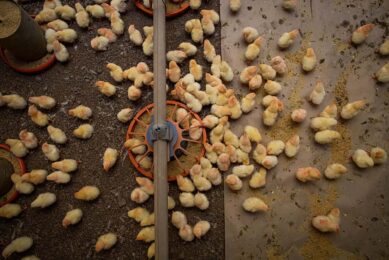
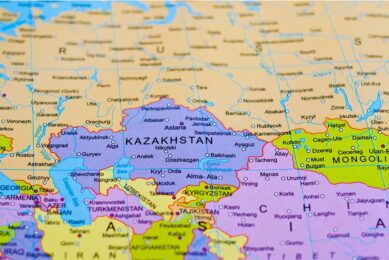
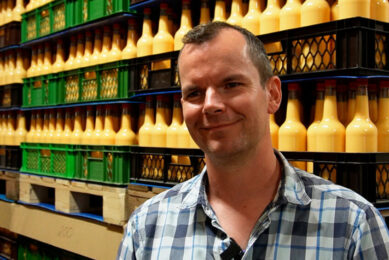
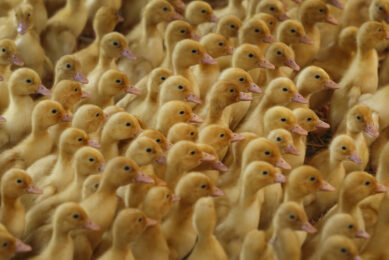



 WP Admin
WP Admin  Bewerk bericht
Bewerk bericht